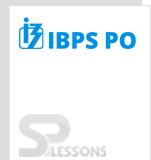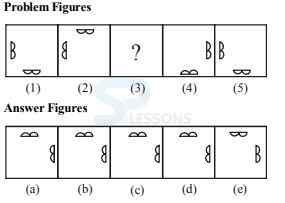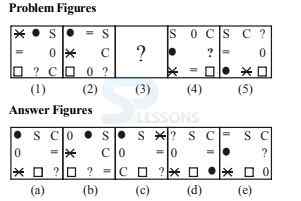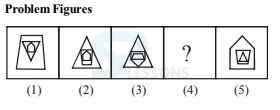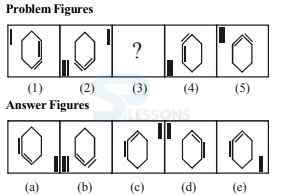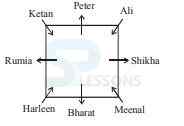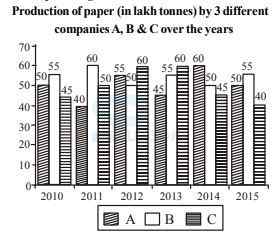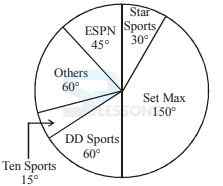 Introduction
Introduction
Career in Banking is one of the most lucrative and most sought after careers. In India, Bank Recruitment Exams are primarily conducted for recruitment of Probationary Officers, Clerks & Specialist Officers. India currently[2019] has 93 commercial and 27 public sector banks out of which 19 are nationalized and 6 are SBI and its associate banks and rest two are IDBI Bank and Bharatiya Mahila Bank, which are categorized as other public sector banks. Recruitment for Bank Probationary Officers, Management Trainees, Clerks and for various other posts generally follow a 3 step recruitment process: Preliminary Exam + Mains Exam + Interview & Group Discussion. The article IBPS PO Mains Practice Quiz presents a practice set for the most sought after IBPS PO recruitment. Until the year 2013, All Public Sector Banks used to conduct their own entrance test, GDs and Personal Interview for recruiting candidates. However, after 2014, IBPS started conducting recruitment Tests for 12 PSU Banks. IBPS holds a separate entrance test for recruitment.
Mains exams are very important to clear every government sector or bank related recruitment process in India. Only those candidates who are selected in the Mains round are allowed to move further up in the recruitment process. The marks obtained in the Mains exams are considered for the final merit list. Mains exams usually consist of 4 sections, with 155 questions with a time duration of 3 hours. Mains exams most certainly have negative marking.
 Quiz
Quiz
1. Which of the following expressions is correct if the expression ‘Z > Y > W < V’ is definitely correct?
-
A. V > Y
B. W < Z
C. Z > V
D. Y > V
E. None of these
-
A. B, F
B. S, T
C. P, R
D. B, F
E. None of these
-
A. R
B. T
C. P
D. Q
E. S
-
A. One
B. Two
C. Three
D. Four
E. None
-
A. B
B. D
C. C
D. A
E. None of these
-
A. F sits second to the right of C.
B. F is not an immediate neighbor of A.
C. F sits third to the left of D.
D. F sits at one of the extreme ends of the line.
E. F faces V.
-
A. R
B. V
C. S
D. T
E. Cannot be determined
-
A. Five
B. Six
C. Seven
D. Four
E. None of these
-
A. VI
B. VII
C. VIII
D. IX
E. None of these
-
A. Three
B. Two
C. Four
D. Five
E. None of these
-
A. 59 bend 46 cards now 27 wins 14
B. 59 bend 46 cards 27 now win 14
C. 59 bend 46 cards 27 now 14 win
D. 59 bend 46 card 27 14 win now
E. There will be no such step.
-
A. Peter
B. Rumia
C. Harleen
D. Shikha
E. Bharat
-
A. Bharat
B. Rumia
C. Shikha
D. Peter
E. Cannot be determined
-
A. Immediate to the left
B. Second to the left
C. Third to the left
D. Third to the right
E. Second to the right
-
A. Shikha
B. Ali
C. Bharat
D. Harleen
E. Meenal
-
A. Meenal and Ketan
B. Bharat, Rumia
C. Bharat, Meenal
D. Ali, Rumia
E. Ali, Ketan
-
A. Only Bharat
B. Ketan and Rumia
C. Only Harleen
D. Harleen and Meenal
E. No one sits between Peter and Ali.
-
A. If only conclusion I follows.
B. If only conclusion II follows.
C. If either conclusion I or conclusion II follows.
D. If neither conclusion I nor conclusion II follows.
E. If both conclusion I and conclusion II follow.
-
A. If only conclusion I follows.
B. If only conclusion II follows.
C. If either conclusion I or conclusion II follows.
D. If neither conclusion I nor conclusion II follows.
E. If both conclusion I and conclusion II follow.
-
A. If only conclusion I follows.
B. If only conclusion II follows.
C. If either conclusion I or conclusion II follows.
D. If neither conclusion I nor conclusion II follows.
E. If both conclusion I and conclusion II follow.
-
A. If only conclusion I follows.
B. If only conclusion II follows.
C. If either conclusion I or conclusion II follows.
D. If neither conclusion I nor conclusion II follows.
E. If both conclusion I and conclusion II follow.
-
A. If only conclusion I follows.
B. If only conclusion II follows.
C. If either conclusion I or conclusion II follows.
D. If neither conclusion I nor conclusion II follows.
E. If both conclusion I and conclusion II follow.
-
A. If only conclusion I follows.
B. If only conclusion II follows.
C. If either conclusion I or conclusion II follows.
D. If neither conclusion I nor conclusion II follows.
E. If both conclusion I and conclusion II follow.
-
A. None is implicit
B. Only (A) is implicit
C. Only (B) is implicit
D. Only (C) is implicit
E. Only (A) and (B) are implicit
-
A. None is implicit
B. Only (B) is implicit
C. Only (A) and (B) are implicit
D. Only (C) is implicit
E. None of these
-
A. Terminal adapter
B. Bulletin board
C. Modem
D. Terminal emulation
E. None of these
-
A. Word Perfect Document file
B. MS Office Document
C. Animation/movie file
D. Image file
E. None of these
-
A. Data input for processing
B. Output in produced in the form of Hard copy
C. Processing data
D. A system where the computer is used to turn data into information
E. None of these
-
A. Find command
B. Replace command
C. Drag and Drop
D. Copy command
E. None of these
-
A. Transfer files to and from an Internet Server
B. Designing a website
C. Connecting to the internet
D. All of the the above
E. None of these
-
A. a LAN of an organization
B. a Wide Area Network connecting all branches of an organization
C. a corporate computer network
D. a network connecting all computers of an organization and using the internet.
E. None of these
-
A. machine language
B. Win Zip
C. Perl
D. HTML
E. None of these
-
A. Base
B. Sub
C. Folder
D. Root
E. None of these
-
A. Translate instruction of a high level language into machine language
B. Translate entire source program into machine language program
C. It is not involved in program’s execution
D. All of above
E. None of these
-
A. Does all the thinking for a computer
B. Can enter input data quickly
C. Can operate all types of computer equipment
D. Can draw only flowchart
E. None of these
Directions Q(46 - 50): In each of the following questions a number series is given. Only one number is wrong in each series. Find out that wrong number, and taking this wrong number as the first term of the second series formed following the same logic, find out the third term of the second series.
46. 1 2 8 21 88 445
Ratio of candidates passing and failing within the city.
71. What is the ratio of the number of candidates failing the exam from City D to that of those failing the exam from City A?
Here, the maximum difference is from 2011 to 2012, which is 10. And the second nearest to it is fall or rise of 5. So, undoubtedly the answer is 2012.
Q59.
Answer: Option E
Explanation: Percentage production = [latex]\frac{120}{90}[/latex] X 100 = 133.3%
Q60.
Answer: Option C
Explanation: Average production of A = 50
Average production of B = 54.17
Average production of C = 50
Difference of production = 54.17 – 50 = 4.17
Q61.
Answer: Option B
Q62.
Answer: Option A
Explanation: Angle showing 20% viewership = [latex]\frac{20}{100}[/latex] x 360 = [latex]{72}^{0}[/latex]
From pie-chart, it is clear that only Set Max has shown angle more than [latex]{72}^{0}[/latex]
Q63.
Answer: Option C
Explanation: Required ratio = [latex]\frac{60}{3}[/latex] X 2:45 = 40:45 = 8:9
Q64.
Answer: Option C
Explanation: It is given 80% of actual value of DD sports = [latex]{60}^{0}[/latex]
Hence, actual value of DD sports = [latex]{75}^{0}[/latex]
Hence, % share of Set Max = [latex]\frac{150}{360 + 75 - 60 }[/latex] X 100
= [latex]\frac{150}{375 }[/latex] X 100 = 40%
Q65.
Answer: Option D
Explanation: Required viewership = [latex]\frac{360}{45}[/latex] X 90000 = 720000
Solutions: Q(66-70)
Total = 250 students
Girls = [latex]\frac{250 × 13}{13 + 2 }[/latex] = 130
Boys = [latex]\frac{250 × 12}{13 + 2 }[/latex] = 120
50% girls play only table-tennis and badminton = [latex]\frac{130 × 50}{100 }[/latex] = 65
30% Girls play hockey and chess only = [latex]\frac{130 × 30}{100 }[/latex] = 39
10% Girls play chess, badminton and table tennis only = [latex]\frac{130 × 10}{100 }[/latex] = 13
Girls play tennis and chess only [latex]\frac{18 }{3 }[/latex] x 2 = 12
Girls play football only = 130 – (65 + 39 + 13 + 12) = 1 20% of boys play football, hockey and tennis only
Girls = [latex]\frac{120 × 20}{100 }[/latex] = 24
15% of boys play tennis and chess only = [latex]\frac{120 × 15}{100 }[/latex] = 18
Boys playing table tennis and badminton = [latex]\frac{65 × 20}{100 }[/latex] = 13
40% of boys play only football = [latex]\frac{120 × 40}{100 }[/latex] = 48
Boys play only chess = 120 – (24+ 18 + 13 + 48) = 17
Q66.
Answer: Option D
Explanation: Number of students playing football = 48 + 24 + 1 = 73
Q67.
Answer: Option E
Explanation: Number of students playing tennis
= 65 + 13 + 12 + 24 + 18 + 13 = 145
Q68.
Answer: Option A
Explanation: Number of students playing tennis
Number of girls playing chess = 12 + 39 + 13 = 64
Number of girls not playing chess = 130 – 64 = 66
Q69.
Answer: Option B
Explanation: Required ratio = 39 : 24 = 13 : 8
Q70.
Answer: Option C
Explanation: Number of students playing badminton
= 65 + 13 +13 = 91
Q71.
Answer: Option C
Explanation: Required ratio = [latex]\frac{3}{4 }[/latex] X 2.27 : [latex]\frac{3}{10 }[/latex] X 1.25
= 1.7025 : 0.375 = 227 : 50
Q72.
Answer: Option B
Explanation: Required percentage = [latex]\frac{1.08}{3.14 }[/latex] X 100 = 34
Q73.
Answer: Option A
Explanation: Total number of candidates appearing from all the cities together
= (1.25 + 3.14 + 1.08 + 2.27 + 1.85 + 2.73) lakhs
= 12.32 lakhs
Number of candidates passing from City F = [latex]\frac{7}{12 }[/latex] x 2.73 = 1.5924 lakh
Required percentage = [latex]\frac{1.5925}{12.32 }[/latex] = 12.93
Q74.
Answer: Option D
Q75.
Answer: Option E
Q76.
Answer: Option C
Q77.
Answer: Option B
Q78.
Answer: Option A
Q79.
Answer: Option A
Q80.
Answer: Option B
-
A. 24.5
B. 25
C. 25.5
D. 25
E. None of these
-
A. 530
B. 534
C. 526
D. 562
E. None of these
-
A. 263
B. 261
C. 299
D. 286
E. None of these
-
A. 12
B. 25
C. 20
D. 18
E. None of these
-
A. 242
B. 246
C. 252
D. 341
E. None of these
-
A. Rs. 24 lakhs
B. Rs. 21 lakhs
C. Rs. 25 lakhs
D. Can’t be determined
E. None of these
-
A. Rs. 32 lakhs
B. Rs. 28.6 lakhs
C. Rs. 34.2 lakhs
D. Can’t be determined
E. None of these
-
A. Rs. 44.2 lakhs
B. Rs. 48.4 lakhs
C. Rs. 46.4 lakhs
D. Rs. 38 lakhs
E. None of these
-
A. 19 : 21
B. 11 : 12
C. 29 : 31
D. 9 : 11
E. None of these
-
A. Rs. 11 lakhs
B. Rs. 20 lakhs
C. Rs. 17 lakhs
D. Rs. 12 lakhs
E. None of these
-
A. 50,000 tonnes
B. 5,00,00,000 tonnes
C. 50,00,000 tonnes
D. 5,00,000 tonnes
E. None of these
-
A. 37.5
B. 38.25
C. 35
D. 36
E. None of these
-
A. 2011
B. 2012
C. 2013
D. 2014
E. 2015
-
A. 95
B. 90
C. 110
D. 115
E. 2015
-
A. 3.17
B. 4.33
C. 4.17
D. 3.33
E. None of these
-
A. 27000
B. 270000
C. 36000
D. 360000
E. None of these
-
A. 1
B. 2
C. 3
D. Cannot be determined
E. None of these
-
A. 2 : 3
B. 5 : 6
C. 8 : 9
D. 9 : 10
E. None of these
-
A. 41[latex]{3}{3}[/latex]%
B. 35%
C. 40%
D. Cannot be determined
E. None of these
-
A. 540000
B. 600000
C. 630000
D. 720000
E. None of these
-
A. 72
B. 64
C. 68
D. 73
E. None of these
-
A. 35
B. 48
C. 50
D. 59
E. None of these
-
A. 66
B. 62
C. 58
D. 55
E. None of these
-
A. 5 : 16
B. 13 : 8
C. 8 : 13
D. 16 : 5
E. None of these
-
A. 84
B. 88
C. 91
D. 78
E. None of these
| City | Number of Candidates |
|---|---|
| A | 12.5 |
| B | 3.14 |
| C | 1.08 |
| D | 2.27 |
| E | 1.85 |
| F | 2.73 |
| City | Passing | Failing |
|---|---|---|
| A | 7 | 3 |
| B | 5 | 3 |
| C | 4 | 3 |
| D | 1 | 3 |
| E | 3 | 2 |
| F | 7 | 5 |
-
A. 289 : 42
B. 42 : 289
C. 227 : 50
D. 50 : 227
E. None of these
-
A. 27
B. 34
C. 42
D. 21
E 38
-
A. 12.93
B. 14.46
C. 10.84
D. 11.37
E. None of these
-
A. F
B. C
C. B
D. D
E. None of these
-
A. 13,000
B. 11,10,000
C. 1,13,000
D. 11,000
E. None of these
-
A. Rs. 24,000
B. Rs. 12,000
C. Rs. 16,000
D. Rs. 20,000
E. None of these
-
A. Rs. 1000
B. Rs. 1200
C. Rs. 1500
D. Rs. 1700
E. None of these
-
A. 6[latex]\frac{1}{4}[/latex] days
B. 5[latex]\frac{3}{4}[/latex] days
C. 5 days
D. 3 days
E. None of these
-
A. 36 km
B. [latex]\frac{1332}{67}[/latex] km
C. 40 km
D. 28 km
E. None of these
-
A. [latex]\frac{5}{7}[/latex]
B. [latex]\frac{10}{21}[/latex]
C. [latex]\frac{2}{7}[/latex]
D. [latex]\frac{11}{21}[/latex]
E. None of these
| Year | Percentage |
|---|---|
| 2011 | 9% |
| 2012 | –16.6% |
| 2013 | – 9% |
| 2014 | 10% |
Directions Q(81 - 85): Rearrange the following five sentences (A), (B), (C), (D) and (E) in the proper sequence to form a meaningful paragraph; then answer the questions given below.
A. Unfortunately, because of modernization, much of nature is now yielding to towns, roads, and industrial areas.
B. In a few places, some natural reserves are now being carved out to avert the danger of destroying nature completely.
C. We should preserve nature to preserve life and beauty.
D. Man will perish without nature, so modern man should continue this struggle to save plants from extinction.
E. A beautiful landscape, full of green vegetation, will not just attract our attention but will fill us with infinite satisfaction.a.
81. Which of the following should be the FIRST sentence after rearrangement?
-
A. A
B. B
C. C
D. D
E. E
-
A. A
B. B
C. C
D. D
E. E
-
A. A
B. B
C. C
D. D
E. E
-
A. A
B. B
C. C
D. D
E. E
-
A. A
B. B
C. C
D. D
E. E
-
A. speed, with
B. kill, towards
C. utilise, on
D. gain, on
E. None of these
-
A. seems, blowing
B. looks, flowing
C. feels, advancing
D. seem, floating
E. None of these
-
A. of, what
B. for, when
C. on, while
D. to, which
E. None of these
-
A. cock, hen
B. fox, vixen
C. goose, gander
D. duck, doe
E. None of these
-
A. moved, said
B. taken, announced
C. shaken, declare
D. dead, asked
E. None of these
-
A. to
B. with
C. from
D. by
E. None of these
-
A. factors
B. features
C. reasons
D. methods
E. None of these
-
A. process
B. system
C. procedures
D. policy
E. None of these
-
A. fall
B. rise
C. down
D. decrease
E. None of these
-
A. evaluation
B. assessment
C. result
D. competence
E. None of these
-
A. flood
B. growth
C. increase
D. slope
E. None of these
-
A. falling
B. diminishing
C. rising
D. growing
E. None of these
-
A. lines
B. long
C. rows
D. queues
E. None of these
-
A. managerial
B. nice
C. prestigious
D. available
E. None of these
-
A. vacate
B. posted
C. created
D. available
E. None of these
-
A. He is easily taken in by the deceptive publicity.
B. He is wooed by the charm of foreign brands readily available in the market.
C. He is not aware of the Law of Torts as practiced abroad.
D. He is not aware of the benefits of consumer rights.
E. The Consumer Protection Act has been implemented and he can seek redressal.
-
A. A lack of the basis of the system, trained staff and decisions based on fact
B. A paucity of funds, jury, and judgment
C. A lack of resources, employees and final decision based on facts
D. Not having the required manpower, economy and decisive ruling
E. None of these
-
A. Only A and C
B. Only A and B
C. Only B and C
D. Only B and C
E. None of these
-
A. The mysterious Act is yet to be resolved.
B. The consumer is wary of the Act.
C. The Act is not easily accessible.
D. The consumer remains unaware of his rights and privileges.
E. The plight of the consumer is yet to end.
-
A. He was partial towards the airline as it was a foreign one.
B. He never bothered to safeguard the interests of the reviewer.
C. He dismissed cases without even giving a second thought to what cases came to him.
D. He was apathetic and uninterested about the direction the case might head in.
E. He passed irrelevant verdicts indifferently.
-
A. It protects the right to redress.
B. It is a forum that protects the redresser.
C. It shields the consumer from deceptive and unfair trade practices.
D. It enables the plaintiff to fight his case free of cost.
E. None of these
-
A. It does not cover the international law of torts.
B. It is not comprehensive with regard to the liberal economy.
C. No forum or commission has come forward to bring it to light.
D. Its red-tapism
E. None of these
-
A. Dias
B. Podium
C. Platform
D. Stage
E. None of these
-
A. Brought into harmony
B. Adjusted
C. Hazardous
D. Out of tune
E. Malpractice
-
A. Penalized
B. Fine
C. Sentence
D. Freedom from punishment
E. None of these
-
A. Buried
B. Muddy
C. Steeped
D. Free
E. None of these
-
A. 1, 2
B. 2, 4
C. 3, 1
D. 1, 4
E. 4, 3
-
A. 1, 4
B. 2, 4
C. 3, 1
D. 1, 2
E. 4, 3
-
A. 1, 2, 4
B. 2, 4
C. 3, 1
D. 1, 4
E. 4, 3
-
A. 1, 2, 3
B. 1, 2
C. 2, 1, 4
D. 2, 3, 4
E. All of (1), (2), (3), (4)
116. Which of the following amendments in the Banking Regulation Act 1949 has the Reserve Bank of India (RBI) asked for finalizing guidelines for new banking licenses?
-
A. Any acquisition of 5% or more of the share capital of a bank should be subject to the Central Bank’s approval
B. RBI should have the authority to supersede the board of directors of a banking company and appoint an administrator during the period of supersession
C. RBI should have the authority to call for information or inspection of any associate enterprise of a banking company.
D. All the above
E. None of the above
-
A. 1, 2 and 3 only
B. 2, 3 and 4 only
C. 1, 3 and 4 only
D. 2 and 3 only
E. None of the above
-
A. 1 only
B. 2 only
C. Both 1 and 2
D. Neither 1 nor 2
E. None of the above
-
A. Insurance for life
B. Investment in Mutual Funds
C. Self Help Groups
D. Letter of Credit
E. All of these
-
A. Indian Bank’s Association
B. Reserve Bank of India
C. Securities and Exchange Board of India
D. Government of India
E. All of these
-
A. 1 only
B. 1 and 4 only
C. 1, 2 and 4 only
D. 1, 2, 3 and 4
E. None of these
-
A. (i) & (ii)
B. (ii), (iii) & (iv)
C. (ii) & (iv)
D. (iii) & (iv)
E. None of these
-
A. Reserve Bank of India
B. Indian Bank’s Association
C. Ministry of Finance
D. Central Statistical Organisation
E. Central Bureau of Investigation
-
A. Investment
B. El Nino effect
C. Core banking Solution
D. RTGS
E. All are financial terms
-
A. Corporation Bank
B. United Bank of India
C. Vijaya Bank
D. Bank of Maharashtra
E. Axis Bank
-
A. 1 and 2
B. 2 and 3
C. 1 and 3
D. All of the above
E. None of these
-
A. CHAPS
B. SWIFT
C. NEFT
D. SFMS
E. CHIPS
-
A. Foreign Currency
B. Internet Banking
C. US Dollars
D. Travelers' cheques
E. Credit Cards
-
A. Home Loans
B. Working capital finance
C. Corporate term loans
D. Infrastructure financing
E. Export Credit
-
A. Microsoft Secrets
B. The Road Ahead
C. The Elephant Paradigm
D. How Nations Compete
E. None of these
-
A. Bank for International Settlements
B. Bank for Industrial Settlements
C. Bank for Industrial Sectors
D. Bank for International Services
E. None of these
-
A. Central Bank of India
B. Bank of India
C. Indian Bank
D. State Bank of India
E. None of these
-
A. Financial Investment Network and Operations
B. Farmers’ Investment in National Organisation
C. Farmers’ Inclusion News and Operations
D. Financial Inclusion Network and Operations
E. None of these
-
A. Investment
B. El Nino effect
C. Core banking Solution
D. RTGS
E. All are financial terms
-
A. Bank Rate
B. Repo rate
C. Prime Lending Rate
D. Cash Reserve Ratio
E. None of these
-
A. Service Tax
B. Education Cess
C. Customs Duty
D. Toll Tax
E. None of these
-
A. Marie Curie
B. Pearls Buck
C. Bertha Von Seffner
D. Mother Teresa
E. None of these
-
A. Music
B. Social Service
C. Literature
D. Classical Dance
E. None of these
-
A. Corporation Bank
B. United Bank of India
C. Vijaya Bank
D. Bank of Maharashtra
E. Axis Bank
-
A. Amitav Ghosh
B. Tavleen Singh
C. Amit Chaudhuri
D. Arundhati Roy
E. None of these
-
A. The Hilton Young Commission
B. All India Rural Credit Survey Committee
C. Gorawala Committee
D. Talwar Committee
E. None of these
-
A. Advances to traders
B. Advances of small scale units
C. Financing of weaker sections of the society
D. Loan syndicate
E. None of these
-
A. Life Insurance
B. General Insurance
C. Fire Insurance
D. Both (1) and (2)
E. None of these
-
A. Scheduled Commercial Banks
B. Non-Banking Financial Institutions
C. Urban Co-operative Banks
D. All of the above
E. None of these
-
A. Development Finance Institutions (DFIs)
B. Insurance Companies
C. Non-Banking Financial Companies (NBFCs), Primary Dealers (PDs) and capital market intermediaries e.g., mutual funds.
D. All of the above
E. None of these
-
A. EXIM Bank
B. IDBI Bank Ltd
C. ICICI Bank Ltd
D. All of these
E. None of these
-
A. Life Insurance Corporation of India
B. IDBI Bank Ltd
C. ICICI Bank Ltd
D. State Bank of India
E. None of these
-
A. Nationalized Banks and Private Sector Banks
B. Scheduled and Non-scheduled Banks
C. Regional Rural Banks, Co-operative Banks and Land Development Banks
D. All of the above
E. None of these
-
A. Central Bank of India
B. Reserve Bank of India
C. IDBI
D. IBRD
E. SBI
-
A. both saving and fixed accounts
B. saving and current accounts.
C. current and fixed accounts.
D. all type of accounts available.
E. None of these
-
A. Mega
B. Micro
C. Multiple
D. Monetary
E. None of these
-
A. Average revenue equals average cost
B. Marginal revenue equals marginal cost
C. Total Revenue equals total cost
D. Marginal revenue equals total cost
E. None of these
-
A. Treasury Bill
B. Share
C. Debenture
D. Mutual Fund
E. None of these
-
A. March 1948
B. April 1948
C. July 1948
D. October 1948
E. None of these
-
A. Industries in public sector only
B. Industries set up for export promotion
C. Joint-stock companies in the public or private or joint sector or co-operative sector
D. All of the above
E. None of these


